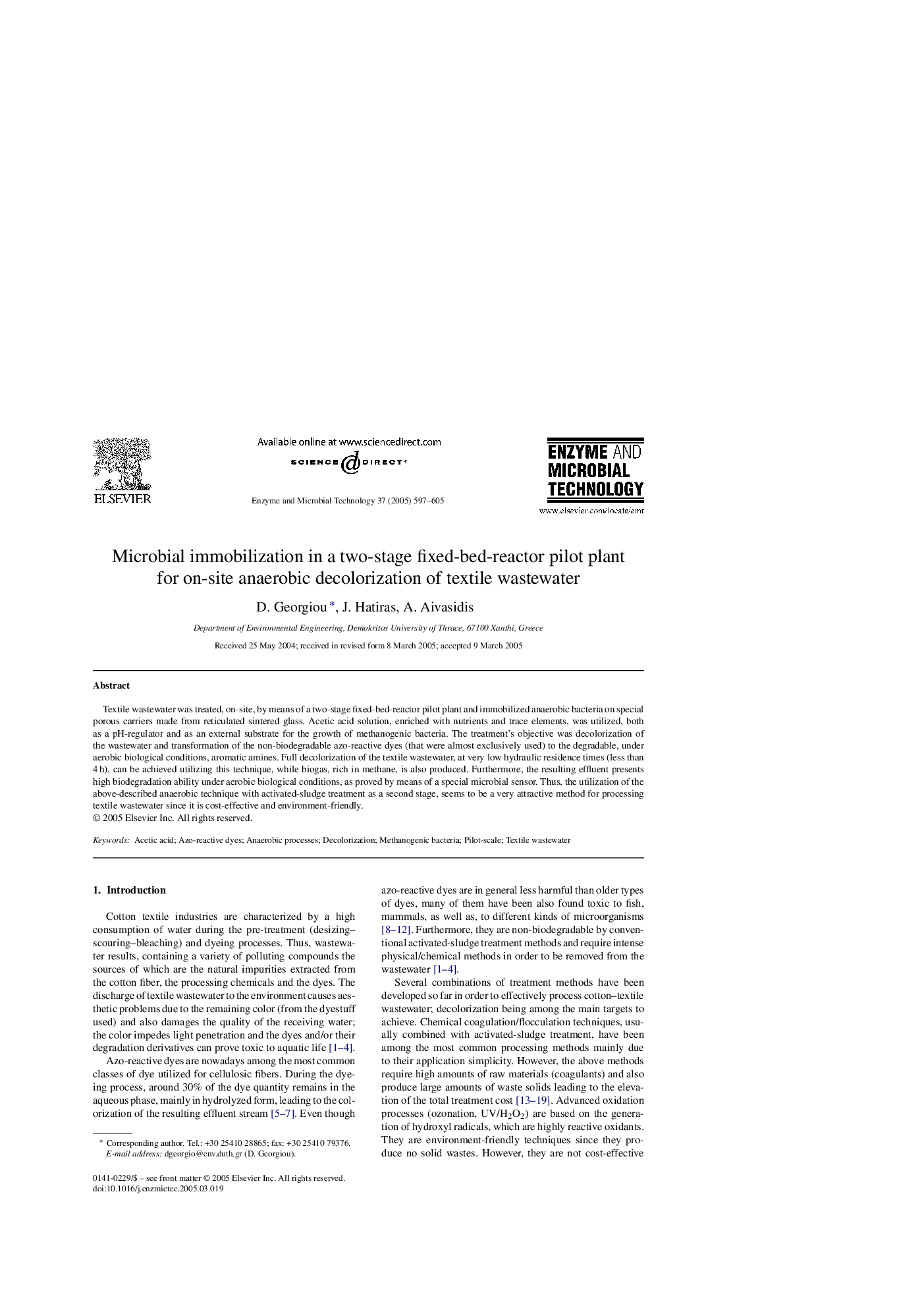| Article ID | Journal | Published Year | Pages | File Type |
|---|---|---|---|---|
| 10233161 | Enzyme and Microbial Technology | 2005 | 9 Pages |
Abstract
Textile wastewater was treated, on-site, by means of a two-stage fixed-bed-reactor pilot plant and immobilized anaerobic bacteria on special porous carriers made from reticulated sintered glass. Acetic acid solution, enriched with nutrients and trace elements, was utilized, both as a pH-regulator and as an external substrate for the growth of methanogenic bacteria. The treatment's objective was decolorization of the wastewater and transformation of the non-biodegradable azo-reactive dyes (that were almost exclusively used) to the degradable, under aerobic biological conditions, aromatic amines. Full decolorization of the textile wastewater, at very low hydraulic residence times (less than 4Â h), can be achieved utilizing this technique, while biogas, rich in methane, is also produced. Furthermore, the resulting effluent presents high biodegradation ability under aerobic biological conditions, as proved by means of a special microbial sensor. Thus, the utilization of the above-described anaerobic technique with activated-sludge treatment as a second stage, seems to be a very attractive method for processing textile wastewater since it is cost-effective and environment-friendly.
Keywords
Related Topics
Physical Sciences and Engineering
Chemical Engineering
Bioengineering
Authors
D. Georgiou, J. Hatiras, A. Aivasidis,
